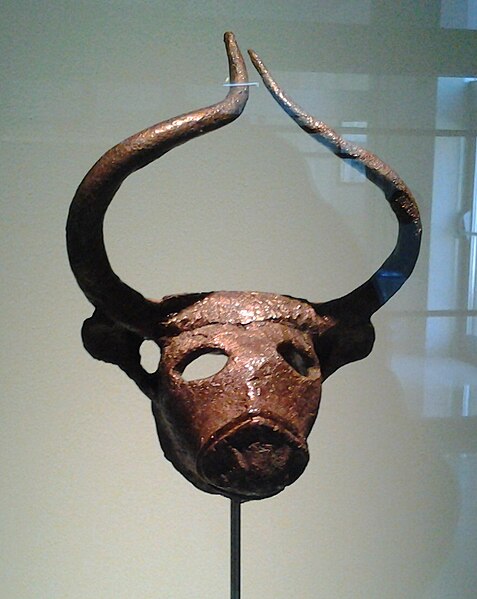Bahrain was a central location of the ancient Dilmun civilization. Bahrain's strategic location in the Persian Gulf has brought rule and influence from mostly the Persians, Sumerians, Assyrians, Babylonians, Portuguese, the Arabs, and the British.
Dilmun burial mounds in 1918.
Phoenicians man their ships in service to Assyrian king Sennacherib, during his war against the Chaldeans in the Persian Gulf, ca. 700 BC
The Khamis Mosque in 1956.
The Portuguese Fort in 1870.
Dilmun, or Telmun, was an ancient East Semitic-speaking civilization in Eastern Arabia mentioned from the 3rd millennium BC onwards.
Based on contextual evidence, it was located in the Persian Gulf, on a trade route between Mesopotamia and the Indus Valley civilisation, close to the sea and to artesian springs. Dilmun encompassed Bahrain, Kuwait, and eastern Saudi Arabia. This area is certainly what is meant by references to "Dilmun" among the lands conquered by King Sargon II and his descendants.
Votive relief of Ur-Nanshe, king of Lagash: one of the inscriptions reads, “boats from the (distant) land of Dilmun carried the wood (for him)”, which is the oldest known written record of Dilmun and importation of goods into Mesopotamia.
Receipt for garments sent by boat to Dilmun in the 1st year of Ibbi-Sin's rule, circa 2028 BCE. British Museum BM 130462.
Bull's head, made of copper in the early period of Dilmun (ca. 2000 BC), discovered by Danish archeologists under Barbar Temple, Bahrain.
Correspondence between Ilī-ippašra, the governor of Dilmun, and Enlil-kidinni, the governor of Nippur, ca. 1350 BC








